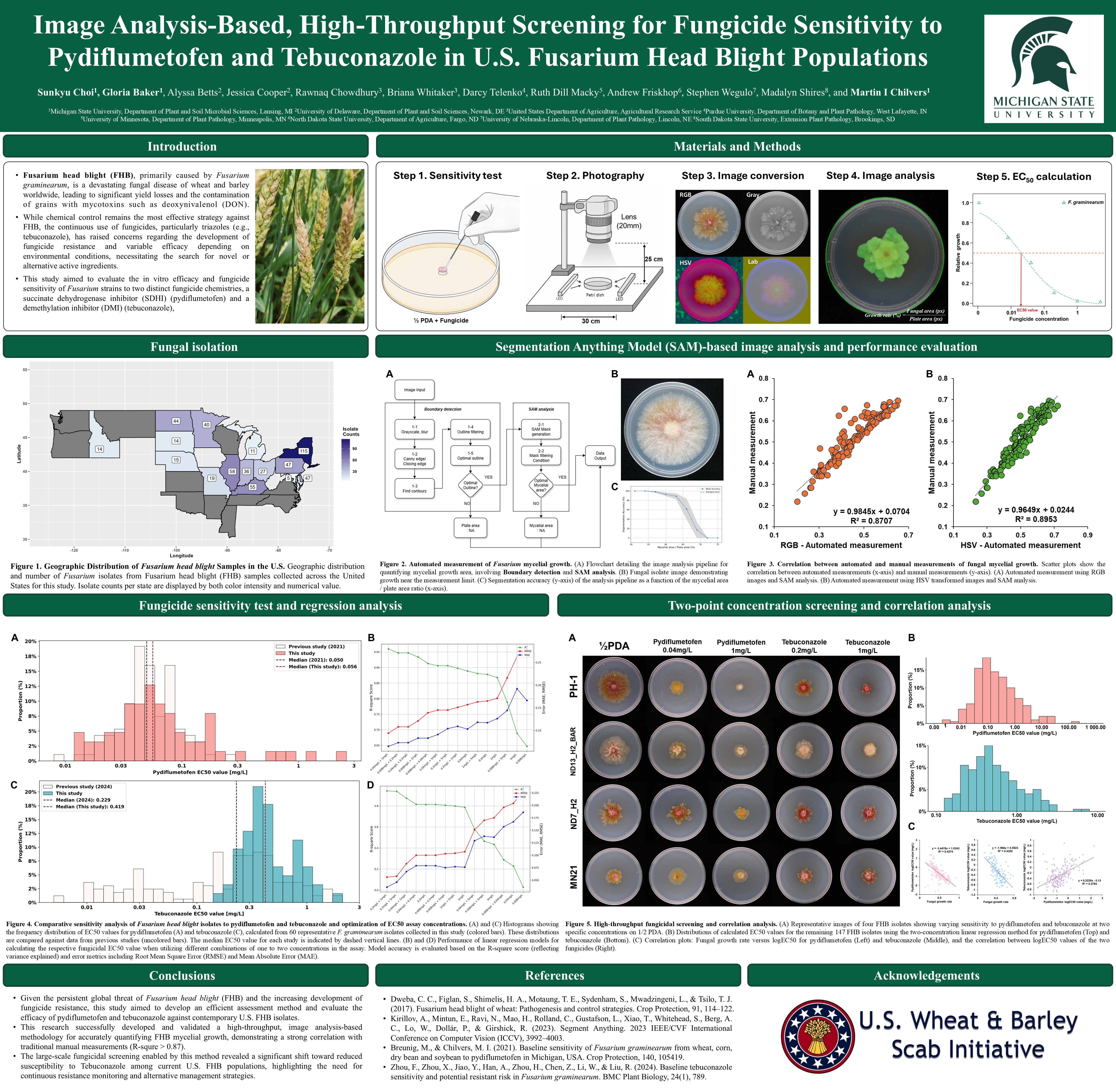Authors: Sunkyu Choi 1, Gloria A. Baker 1, Alyssa Betts 2, Jessica Cooper 2, Rawnaq Chowdhury 3, Briana Whitaker 3, Darcy Telenko 4, Ruth Dill Macky 5, Andrew Friskop 6, Stephen Wegulo 7, Madalyn Shires 8, Martin I. Chilvers 1
1. Michigan State University, Department of Plant, Soil and Microbial Sciences, Lansing, MI
2. University of Delaware, Department of Plant and Soil Sciences, Georgetown, DE
3. United States Department of Agriculture, Agricultural Research Service
4. Purdue University, Department of Botany and Plant Pathology, West Lafayette, IN
5. University of Minnesota, Department of Plant Pathology, Minneapolis, MN
6. North Dakota State University, Department of Plant Pathology, Fargo, ND
7. University of Nebraska-Lincoln, Department of Plant Pathology, Lincoln, NE
8. South Dakota State University, Extension Plant Pathology, Brookings, SD
Corresponding Author: Martin I. Chilvers, chilvers@msu.edu
Presenting Author: Sunkyu Choi
Abstract
Fusarium head blight (FHB), primarily caused by Fusarium graminearum, remains a critical threat to global cereal production. This threat is exacerbated by increasing concerns over fungicide resistance, particularly to widely used demethylation inhibitor (DMI) fungicides like tebuconazole. This study aimed to develop a high-throughput method for assessing in vitro fungicidal efficacy, and to evaluate the sensitivity of 500+ FHB isolates collected across the United States to pydiflumetofen (SDHI) and tebuconazole (DMI). We developed and validated a novel image analysis pipeline utilizing the Segmentation Anything Model (SAM) for automated quantification of mycelial growth area. This automated method demonstrated high accuracy and a strong correlation with manual measurements (R2 > 0.87). This automated process was subsequently employed to calculate the EC50 value for 60 representative F. graminearum isolates across five different concentrations of tebuconazole and pydiflumetofen. The EC50 distribution for pydiflumetofen showed a highly similar range to previous studies (median variation from 0.050 to 0.056 mg L-1), whereas the tebuconazole EC50 distribution exhibited an increase in the median value (from 0.23 to 0.42 mg L-1) compared to historical data . A linear regression approach further confirmed that EC50 values could be estimated using only two specific fungicide concentrations, significantly accelerating the screening process. Utilizing this high-throughput system, we conducted a large-scale fungicidal sensitivity screening. The screening across the Fusarium spp. populations successfully confirmed the distribution and range of EC50 values for both tebuconazole (0.13-7.72 mg L-1) and pydiflumetofen (0.002-190.5 mg L-1). Furthermore, correlation analysis revealed a tendency for isolates with higher EC50 values to exhibit slower mycelial growth rates. In summary, this research established an efficient, objective, and reproducible method for FHB fungicide sensitivity testing. It also revealed shifting fungicide sensitivity profiles within U.S. FHB populations, necessitating proactive resistance management strategies.

